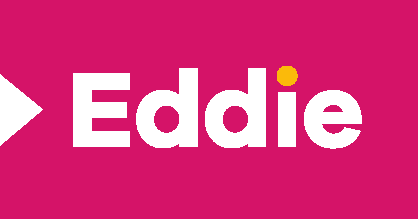Video co-creation offers businesses a strategic approach to content production where employees capture footage while professional editors handle post-production. This collaborative model delivers authentic, cost-effective videos while fostering employee engagement and scaling content creation capabilities. For organizations seeking to expand their video strategy without the expense of traditional production methods, co-creation provides an efficient solution that leverages internal knowledge while ensuring professional quality through expert editing support.
Why should businesses try video co-creation?
In today’s content-driven business landscape, video has become essential for effective communication. The traditional approach of hiring full production crews for every video need is neither sustainable nor scalable for most organizations. Co-creation addresses this challenge by empowering your team to capture authentic moments while professional editors transform the raw footage into polished, branded content.
This innovative model, pioneered by Eddie in Europe since 2015, enables businesses to produce significantly more video content at a fraction of the cost. By combining employee-generated footage with professional editing expertise, companies can maintain high production standards while dramatically expanding their video output.
With co-creation, your team’s insider knowledge and authentic perspectives shine through, creating content that resonates more genuinely with audiences while building valuable video production skills within your organization.
What is video co-creation and how does it work in a corporate setting?
Video co-creation is a collaborative production model where employees record footage and professional editors handle post-production. Unlike traditional video production that requires scheduling and coordinating with external filming crews, co-creation puts recording capabilities in your team’s hands while ensuring professional-quality results through expert editing.
The workflow typically follows these steps: First, employees capture footage using smartphones or basic equipment. They then upload this raw material to a platform (Eddie uses Cobie) where professional editors transform it into polished, branded videos. The editors handle everything from color correction and sound engineering to adding graphics, animations, and ensuring brand consistency.
This approach works particularly well for regular content needs like internal communications, training videos, event recaps, and social media content. It creates a clear distinction of responsibilities – your team focuses on content creation while the editing professionals ensure technical excellence.
What are the top benefits of video co-creation for businesses?
The co-creation model offers substantial cost advantages compared to traditional video production. By eliminating the need for a full production crew on location, businesses can reduce video production costs dramatically while increasing output volume.
Authenticity is another significant benefit. When your own team members create content, it naturally conveys genuine perspectives and insider knowledge that external crews often miss. This authenticity resonates more deeply with both internal and external audiences.
Co-creation also drives employee engagement by giving team members creative opportunities and new skills. Participating in video creation helps employees feel valued while developing their communication abilities.
The speed and agility of co-creation enables much faster content cycles. Without the need to schedule and coordinate with external crews, videos can be produced in days or even hours rather than weeks.
Finally, this approach allows companies to capture diverse perspectives from across the organization, creating more inclusive and representative content that showcases the full spectrum of your business experience.
How do you implement a successful video co-creation strategy?
Start by establishing a clear goal: at what point would you consider the implementation of video co-creation successful? You will essentially be democratising the video creation process, and there is a degree of freedom involved. Your colleagues may to chose to partake or not. The better you facilitate knowledge and tools, the lower the threshold and the more successful you will be at getting co-creation started within your organisation.
Next, provide basic training for participants. A workshop covering fundamental filming techniques will significantly improve raw footage quality. If you would like teams to independently create their own formats and content plans, training on these topics will greatly improve the continuity and consistency of your video output. Eddie’s kickstart course covers both.
Create a simple footage submission process. Using a dedicated platform like Eddie’s Cobie system makes it easy for employees to upload footage directly from their devices and provide context for editors. Cobie also facilitates the complete process, including feedback and generating subtitles.
Define content themes and create a content calendar to guide employee contributions. Having clear direction helps team members understand what to capture and when.
Finally, establish an efficient workflow with your professional editing partners. Set clear expectations for turnaround times, feedback processes, and brand requirements to ensure smooth collaboration between your team and the editors.
What equipment do employees need for video co-creation?
One of the advantages of video co-creation is its accessibility. Most modern smartphones provide sufficient video quality for business purposes. However, audio quality is crucial – consider providing simple clip-on microphones that connect to smartphones for better sound.
Basic lighting considerations are important. Encourage employees to film in well-lit areas, preferably with natural light, or provide simple portable LED lights for more consistent results.
Simple stabilization tools like smartphone gimbals or mini-tripods can dramatically improve footage quality with minimal investment and training.
Companies like Eddie often offer “Gadget Packs” that combine these essential tools in ready-to-use kits, turning standard smartphones into effective filming setups.
What challenges might businesses face with video co-creation?
Maintaining quality consistency across videos created by different employees can be challenging. This is where professional editing becomes essential – skilled editors can normalize variations in raw footage to create a consistent final product.
Employee participation may be limited by confidence issues or time constraints. Addressing these barriers requires creating a supportive environment, recognizing contributions, and integrating video creation into regular workflows rather than adding it as an extra task.
Content approval workflows need careful consideration. Establish streamlined review processes that maintain quality standards without creating bottlenecks.
Brand guideline adherence is another potential challenge. Using a video branding toolkit with standardized elements helps editors ensure all content aligns with your visual identity, regardless of who captured the original footage.
Video co-creation: measuring success and ROI
When evaluating video co-creation initiatives, track both quantitative and qualitative metrics. Compare production costs with traditional video methods to demonstrate immediate financial benefits.
Measure content output volume – most organizations see a significant increase in video production capacity when implementing co-creation models.
Assess content performance using standard engagement metrics while also gathering feedback on authenticity and relevance from target audiences.
Track employee participation and satisfaction to evaluate the internal benefits of your program. The skills development and engagement aspects often provide substantial organizational value beyond the videos themselves.
Calculate overall ROI by considering both cost savings and the increased value generated through more abundant, authentic content that would have been impossible to produce through traditional methods alone.
If you’re interested in learning more, contact our team today
.

